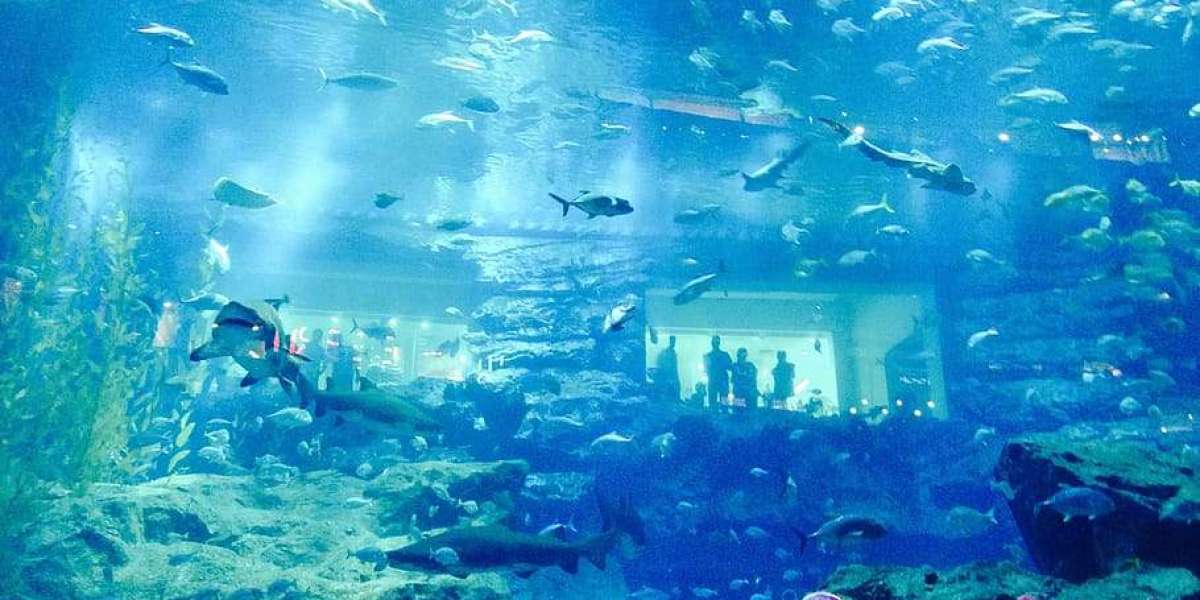Overview
There are thousands of aquatic animals living here, which represents approximately 140 species. Their 10 million gallon tank is home to around 400 sharks and rays, including giant groupers, sand tiger sharks and many other marine species. Visitors can interact directly with the aquatic residents through a variety of experiences, creating priceless memories with friends and family in Dubai Aquarium and Underwater Zoo.
Education at Dubai Aquarium and Underwater Zoo
This place offers a variety of educational programmes for students, visitors and the general public. Their ocean school education programme is intended for both public and private schools in the United Arab Emirates and it includes a wide range of age groups and subject areas.
This pioneering regional effort aims to increase knowledge about marine life and environments while promoting conservation. This ocean school works to produce a cutting-edge educational experience that is pertinent to curriculum updates, accommodating teachers' needs and supports classroom conservation instruction.
Students can interact with a variety of aquatic species while observing, investigating and discussing ecological concepts with qualified educators, all while following the three - do, find and think principles. The Ministry of Education has given its approval to each programme as a suggested programme for school field trips.
Visiting Hours
The visiting hours of this underwater aquarium and zoo are given as follows for your reference.
Monday to Friday - 10 a.m. to 10.15 p.m.
Saturday - 10 a.m. to 11.15 p.m.
Sunday - 10 a.m. to 11.15 p.m.
What to do?
There are varieties of species at this aquarium and zoo to be seen and enjoyed. In addition to that there are some shows and various activities to be performed here. They are listed as follows:
Penguin encounter.
King crocodile encounter.
Otter encounter.
Ray encounter.
Shark trainer encounter.
Presentations.
Feedings.
Penguin Encounter
Gentoo penguins were initially introduced to this region in 2010. Through an exhibit and interaction it elevates the visitor's experience unlike any other, the captivating flightless birds are brought back in the modern day. In the wild, gentoo penguins can be found in their natural habitat along the Antarctic peninsula and sub-antarctic islands. They were imported from a facility in the U.S.A.
For the purpose of simulating subantarctic environmental conditions, they have a specially constructed temperature controlled facility. Their water is kept at a temperature of between 5 and 7 degrees and the air is kept between 2 and 4 degrees. Additionally, they have a unique lighting setup that mimics their yearly light cycle and their summer coincides with penguin winter time. There are several fascinating spots for the penguins to climb on and explore in the multilevel exhibit, including a drop into the pool.
There are 16 stunning Gentoo penguins living at that place, 8 male and 8 female. As a first step until the start of the penguin encounter by early August, a visit to the penguin cove will be included in the aqua nursery experiences tickets. Visitors may enter the penguin cove and get close with a gentoo penguin colony while learning about their intriguing natural behaviours to get a new immersive experience.
King Crocodile Encounter
As a wonder of the animal kingdom, this enormous 40 year old beast is endemic to Australia and weighs a whopping 750 kgs and is more than 5 metres long. The soon to be king crocodile, who had taken over the Brisbane botanic gardens when he was first discovered and measured barely 2.4 metres in length, was swiftly relocated from the gardens to a more secure area in Queensland, Australia.
King crocodile has the ideal circumstances, regular food and a safe environment to develop into one of nature's most feared and formidable reptiles. The king crocodile, which is already among the biggest in the world, is predicted to get substantially bigger over the next 50 years. Australian saltwater crocodiles have been observed to consume larger species, such as water buffalo and wild pigs, in addition to fish, tiny reptiles, and wading birds. Due to his aggressive attitude, the king crocodile has been dubbed a problem crocodile and must stay in a protected area to prevent future clashes with other male crocodiles and people.
Otter Encounter
The smallest of the 13 otter species, this one is indigenous to Asia. In this zoo, visitors can take a behind the scenes tour of the otters' residence and engage with these endearing and charismatic creatures. A special instructional presentation on otters is also available. The small clawed Asian breed of otter in the world, is a highly endangered species and weighs less than 5 kilograms.
They are carnivorous by nature and they inhabit the streams, rivers, marshes and rice paddies and they eat insects, fish, crabs and snails. Otters can consume up to 20% of their body weight per day because of their voracious hunger. Being intelligent, they are excellent tool users that can pick up rocks and use them to crack open mussels.







